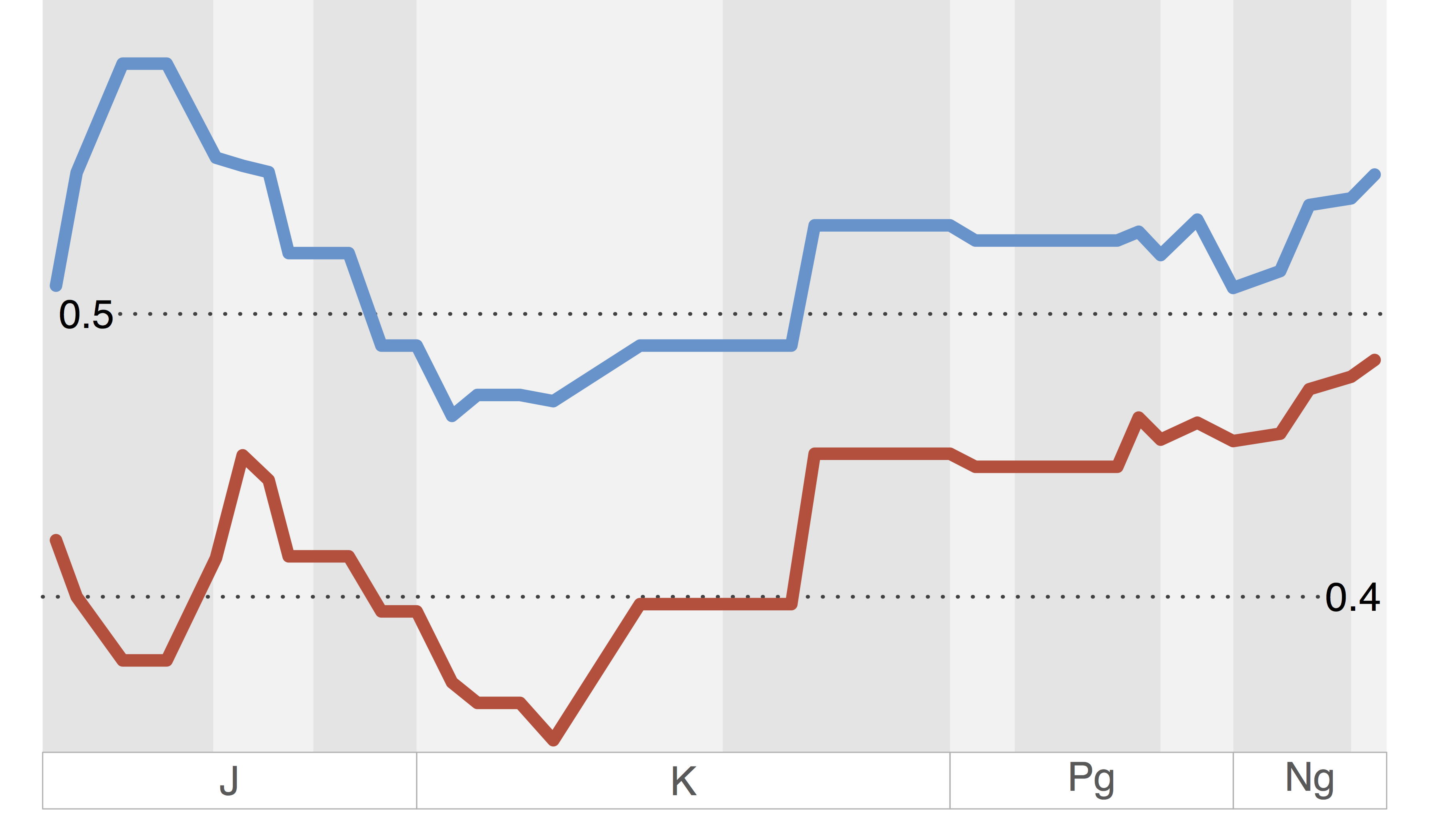Species selection and the macroevolution of coral photosymbiosis and coloniality
Simpson, C. 2013. Species selection and the macroevolution of coral photosymbiosis and coloniality. Evolution 67(6): 1607-1621 pdf
Differences in the relative diversification rates of species with variant traits are known as species selection. Species selection can produce a macroevolutionary change in the frequencies of traits by changing the relative number of species possessing each trait over time. But species selection is not the only process that can change the frequencies of traits, phyletic microevolution of traits within species and phylogenetic trait evolution among species, the tempo and mode of microevolution can also change trait frequencies. Species selection, phylogenetic, and phyletic processes can all contribute to large-scale trends, reinforcing or canceling each other out. Even more complex interactions among macroevolutionary processes are possible when multiple covarying traits are involved. Here I present a multilevel macroevolutionary framework that is useful for understanding how macroevolutionary processes interact. It is useful for empirical studies using fossils, molecular phylogenies, or both. I illustrate the framework with the macroevolution of coloniality and photosymbiosis in scleractinian corals using a time-calibrated molecular phylogeny. I find that standing phylogenetic variation in coloniality and photosymbiosis deflects the direction of macroevolution from the vector of species selection. Variation in these traits constrains species selection and results in a 200 million year macroevolutionary equilibrium.
